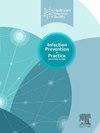使用心肺旁路的成人心脏手术术后感染的临床风险因素:一项回顾性研究
IF 1.8
Q3 INFECTIOUS DISEASES
引用次数: 0
摘要
背景:术后感染仍然是心内直视手术患者的一个严重问题,并与不良预后和死亡率相关。目的探讨成人心脏手术患者医院感染的发生率、特点及相关危险因素,建立医院感染的nomogram预测模型。方法回顾性收集2023年在某三级医院行心脏手术合并体外循环(CPB)患者的资料。患者分为感染组(N = 130)和非感染组(N = 192)。采用多因素logistic回归分析CPB下心脏手术后医疗相关感染的独立危险因素。结果1584例患者中,130例(8.21%)发生术后感染(感染组)。下呼吸道是最常见的感染部位(N = 74, 56.9%),革兰氏阴性菌为主要分离菌(N = 81, 62.3%)。革兰氏阴性菌中以鲍曼不动杆菌最多检出,革兰氏阳性菌中以金黄色葡萄球菌最多检出。对322例患者进行多因素logistic回归分析,CPB时间、美国麻醉医师学会评分、术后第一天降钙素原浓度、单核细胞:淋巴细胞比值、感染前机械通气时间、感染前中心静脉置管时间是术后感染的6个独立预测因素。受试者工作特征曲线下面积为0.824(0.778 ~ 0.870),模型具有较好的预测效果。结论利用常用数据,建立了一种预测术后感染的nomogram方法。该工具可以帮助临床医生优化CPB心脏手术患者的围手术期护理,但需要进一步的外部验证。本文章由计算机程序翻译,如有差异,请以英文原文为准。
Clinical risk factors for postoperative infection in adult cardiac surgery with cardiopulmonary bypass: a retrospective study
Background
Postoperative infection remains a serious problem for patients undergoing open-heart surgery and is associated with poor prognosis and mortality.
Aim
To determine the incidence, characteristics and associated risk factors for nosocomial infections in adult cardiac surgery patients and to develop a nomogram prediction model.
Methods
Data were retrospectively collected from patients who underwent cardiac surgery with cardiopulmonary bypass (CPB) at a tertiary hospital in 2023. Patients were divided into an infected group (N = 130) and a non-infected group (N = 192). Multivariate logistic regression analysis was used to analyse the independent risk factors for healthcare-associated infections after cardiac surgery under CPB.
Results
Of the 1584 patients, 130 (8.21%) developed postoperative infections (infection group). Lower respiratory tract was the most common site of infection (N = 74, 56.9%), while Gram-negative bacteria were the predominant isolates overall (N = 81, 62.3%). Among the Gram-negative bacteria, Acinetobacter baumannii was the most frequently identified, whereas Staphylococcus aureus was the leading strain among Gram-positive bacteria. Multivariate logistic regression analysis of the 322 patients included in the study revealed that CPB duration, American Society of Anaesthesiologists score, procalcitonin concentration on the first postoperative day, monocyte:lymphocyte ratio, preinfection mechanical ventilation duration, and preinfection central venous catheterization duration were the six independent predictors of postoperative infection. The area under the receiver operating characteristic curve was 0.824 (0.778–0.870), and the model showed good predictive performance.
Conclusion
A nomogram has been developed to predict postoperative infection via commonly available data. This tool could assist clinicians in optimising the perioperative care of patients undergoing cardiac surgery with CPB, but further external validation is needed.
求助全文
通过发布文献求助,成功后即可免费获取论文全文。
去求助
来源期刊

Infection Prevention in Practice
Medicine-Public Health, Environmental and Occupational Health
CiteScore
4.80
自引率
0.00%
发文量
58
审稿时长
61 days
 求助内容:
求助内容: 应助结果提醒方式:
应助结果提醒方式:


